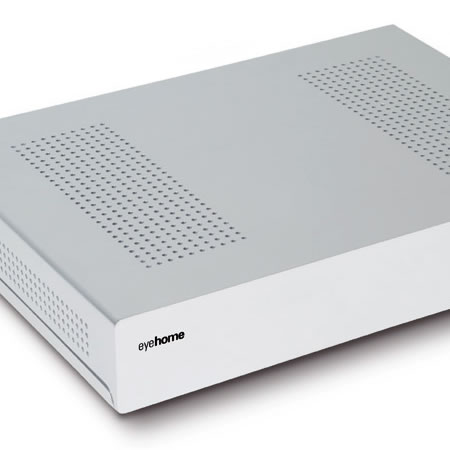If you have been reading recently you will know that I have upgraded my iMac to Leopard.
The majority of software and applications I use seem to have been working fine.
However last night I decided to use my EyeHome so that I could watch a recording of Merlin I had made earlier using EyeTV.
However the EyeHome could not find my EyeTV recording, and I knew I had some. The EyeHome could find video in my Movies folder and other content across the iMac but not the EyeTV recordings.
I did remove the relationship between the iMac and the EyeHome, restart the EyeHome application on the iMac, but no joy.
In the end I used Wi-Fi Access instead. One of the features of EyeTV following an update (version 2.5) was the ability to stream recordings wirelessly to an iPhone or an iPod touch. It’s simple to turn on, just go to the relevant section in the EyeTV preferences.

What this does is once EyeTV has finished recording a TV programme, it will automatically convert the recording into a format which will play on the iPod touch or the iPhone. This is then made available over your wireless network via a web interface.
So using an iPod touch I connected it to the TV, browsed to my EyeTV recordings using the URL given in the EyeTV preferences and played the recording.
This worked well (and the quality is better than the BBC iPlayer version).
Having enjoyed the episode of Merlin, I now wanted to work out why the EyeHome couldn’t find the EyeTV.
I did find this on the Elgato website.
If you are using EyeTV with EyeHome, then EyeHome thinks your EyeTV Archive is in the Library folder for your User account. In reality, it’s probably in the Documents folder, or somewhere else that you chose via the Recording Preferences in EyeTV. Due to this error, EyeHome can’t find your EyeTV recordings without help.
A symbolic link, that points from the true EyeTV Archive location, will solve the problem – name the link “EyeTV Archive”, and place it in the Library folder ( ~/Library/EyeTV Archive). In other words, put the link here:
Open the Hard Drive
Open the Users folder
Open the folder that’s named after your User account (it may have a House icon).
Open the Library folder
Place the link called “EyeTV Archive” in the Library folder
Most users can do this using SymbolicLinker.
In this way, you keep the EyeTV Archive wherever you like, but EyeHome will find a link to it in that Library folder.
My solution is going to be to move the default folder to the Library.
What is interesting is I am almost 100% sure that I did not change this preference and if I had I would have not put the archive in the Documents folder, but put it in the Movies folder.
This was a fresh install of EyeTV as when I upgrade an OS or change computer (or in this case change hard drive) I usually start with a vanilla fresh OS install and then add my applications as and when I need them. This avoids clogging the computer with applications I used once or rarely, and usually avoids problems following you around from the previous install to the new install. A good example of this is that my Canon printer now prints everytime.
Lets hope EyeHome works fine now.



